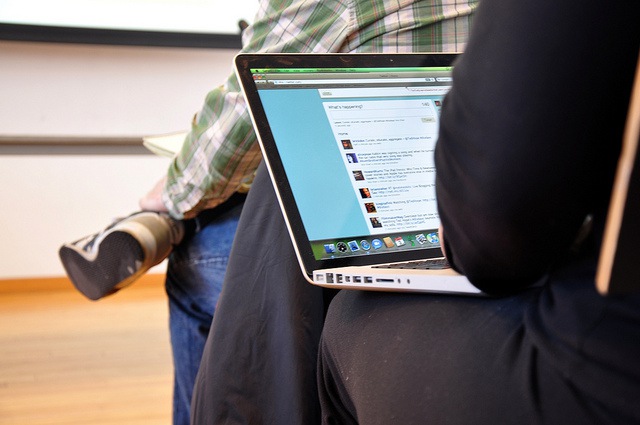If you follow social media trends, there’s always been one obvious, glaring fact. Twitter is for the young. Without having much evidence to back this claim up, you probably would agree with that statement. Just take a look at you own social media accounts. On Facebook, you probably have older friends and family members – such as former teachers or your parents – but is that the case with Twitter? Probably not. You’re more likely to find tech-savvy colleagues or younger siblings sending out tweets.
During its 8 years in existence, however, that hasn’t prevented researchers from examining this trend closer. In fact, it almost seems as if there is a new study every month breaking down the age usage on Twitter. And, what has been discovered in these studies? Pretty much everything we already suspected. Twitter is most popular among younger people. Depending on which study you examine, that age bracket is typically between the ages of 15 to 34. While that’s a huge age gap – mainly because one study found that 15 to 25 makes up around 74%, while the Pew Internet & American Life Project found 18-29 year old make up 30% – most studies have found that people over the age of 40 have a smaller presence on Twitter.
But, that trend is changing. Over the last three years, the percentage of Twitter usage has more than doubled for every adult age group – except those ages 65 and older. In fact, Twitter is increasingly popular between 30 and 49 years old. From November 2010 to November 2013, that age group skyrocketed 142.9%, to reach 17% of Twitter users.
Now that Twitter has become more interesting to people of all ages, how exactly can you figure out a persons age on the 140-character format?
The most obvious place to start is by looking at their profile picture. Most of us should be able to tell the difference between an 18 year old and a 45 year old. But, not everyone uses their own image. Maybe they have an avatar or a picture from a couple of years ago. And, that’s not even getting into those people who seem to never age. In short, you can’t always rely on a picture from the internet, but most of us already know that.
What about a person’s bio? As you also already know, Twitter doesn’t ask for your age on you create an account. Furthermore, it has been found that “only 0.45% of Twitter users disclose their age”. Without people admitting their age and a lack of age verification when signing up, how can you tell how old someone is on Twitter? By their tweets, of course.
“How Old Do You Think I Am?”
 Image Source: Kate Ter Haar/Flickr
Image Source: Kate Ter Haar/Flickr
According to this study from researcher Dong Nguyen, here’s how the age of Twitter uses were determined.
Younger tweeters tend to talk about themselves more often. They also make use of all caps, emoticons and XD. They’ll probably discuss school, since they are most likely still attending high school or college. Finally, they employ alphabetical lengthening. This means that instead of simply writing “nice,” they’ll write “niiiiiiice”.
As for older tweeters, they were more likely to tweet out well-wishing phrases, such as “good morning” and “take care”. Their writing style is also what we’d associate with a better education. For example, more complex language, longer tweets, longer words and more prepositions – “for”, “to” and “under” – are commonly found among older users. Finally, this demographic shares more links and hashtags. Nguyen theorizes that this is a desire for the older crowd to share information and “impression management.”
While that study provided some very useful information, there a couple of considerations. Firstly, it’s difficult to tell the age of people 30 and over. This group rarely changes their language style. Secondly, some people may not fit into their average age category. There was a 24-year-old who was believed to be 17 because of their style of writing, such as using teeny-bopper phrases.
Another way to decipher a person’s age on Twitter is by what exactly they are tweeting. It turns out that Twitter is full of current events and marketing – either people following industry leaders or marketing their brand. That’s not really a groundbreaking observation. That trend has been relevant for years. So, it’s also not shocking that a younger generation would follow and discuss Miley Cyrus, as opposed to the 94-year old woman on Twitter who proudly displays the quilts she made.
How This Is Useful To Your Brand
If you’ve been planning a Twitter campaign around younger people, because you think Twitter is hip and all, you may be not reaching your desired demographic. While the “young” are heavily present on Twitter, it’s the older generation that’s making it one of the top sites in the world. Older people use Twitter to discuss their career and share important global or professional events. It’s not exactly a place where you keep up with high school friends.
In short, if you’ve had a difficult time figuring out which demographic is talking about your brand, you should now have a better idea based on language styles and topics that different age categories use. Hopefully, you can use this information to your advantage during future Twitter campaigns. Twitter also may be doing this with its “Age Gate” to help adult brands, such as alcohol companies.
Have you been able to tell how old someone is by their tweets? If so, how did you figure that out?
Featured Image Credit: Raffi Asdourian/Flickr





![AI Overviews: We Reverse-Engineered Them So You Don't Have To [+ What You Need To Do Next]](https://www.searchenginejournal.com/wp-content/uploads/2025/04/sidebar1x-455.png)